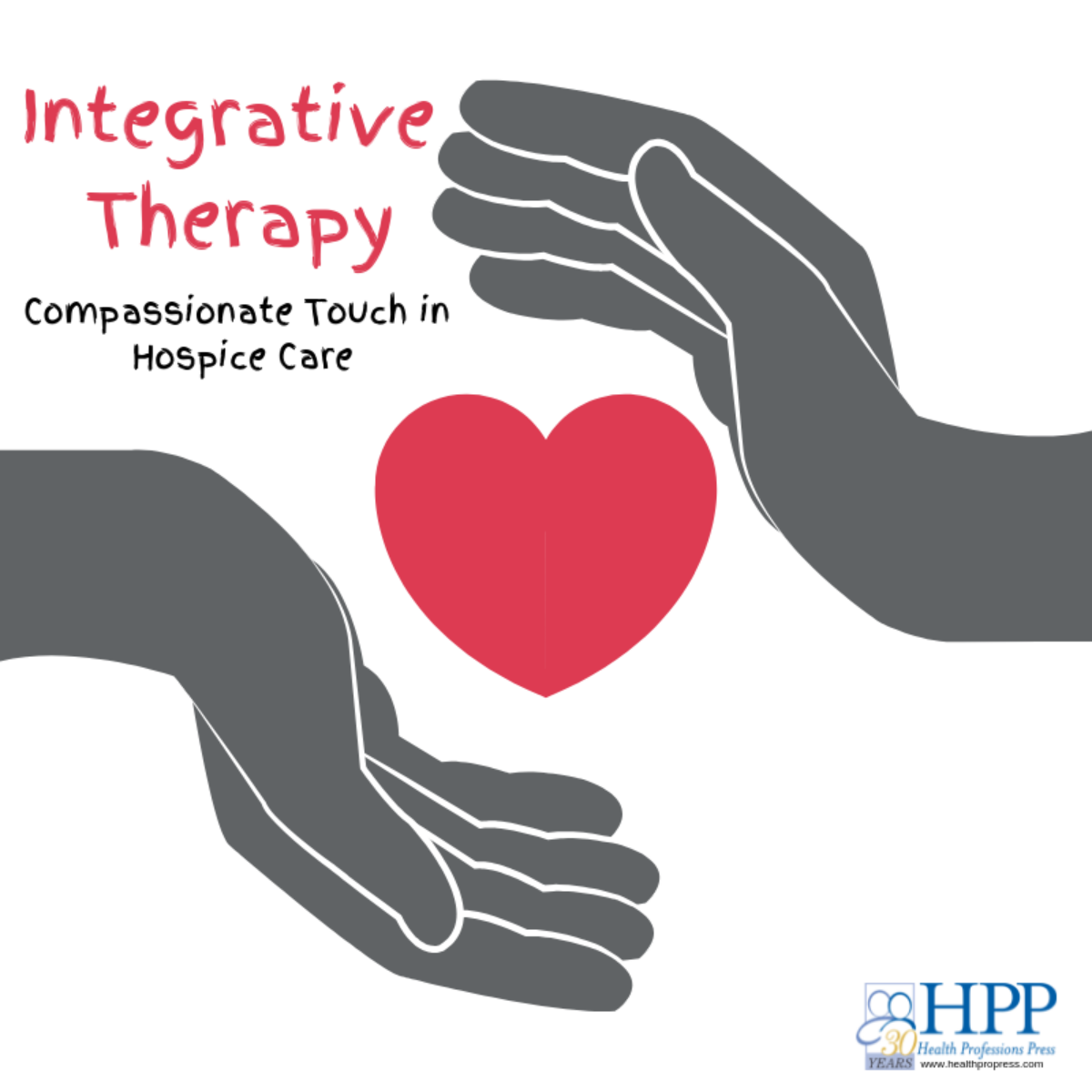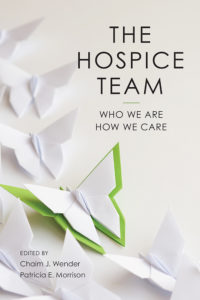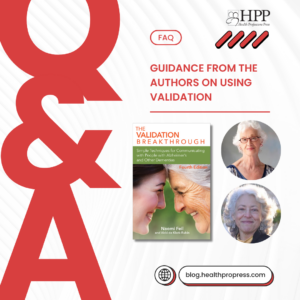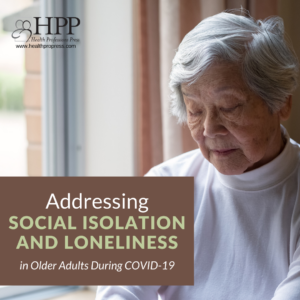
Integrative Therapy: Compassionate Touch in Hospice Care
By Shannon Noble, Integrative Therapist and Volunteer Coordinator.
This post has been adapted from The Hospice Team: Who We Are and How We Care.
Over the years that I have worked in hospice services, first as an integrative therapist and then as a volunteer coordinator, the two most common responses when people learn about what I do for a living are, “It must be very depressing work,” or, “One must be an angel to work for hospice.” Both are untrue, and I hope, through my perspective working with hospice patients and their volunteers, to shed light on the truth as I have learned it to be.
What is integrative therapy?
In 2005, I began working in hospice as an integrative therapist, which is a licensed massage therapist who is trained in holistic modalities that are used to relax the central nervous system and bring about an overall sense of peace and well-being through caring, hands-on therapy. By providing natural therapeutic interventions, integrative therapists ease pain, calm agitation, soothe anxiety, relax labored breathing, and improve quality of life in other ways for hospice patients.
The work I did as an integrative therapist fell in line with the vision I had had in massage school to work with the elderly and those who were ill or ailing. After graduating, I hoped to find work that would allow me to use the skills I had learned to work with those who had been deprived of caring and compassionate physical touch. I had known it would be a challenge to find employment working with seniors on a fixed income or with those faced with the high cost of healthcare. But I still had hope.
Discouraged, but not defeated
After graduation, I reached out to nursing homes and hospitals, only to find, as had been expected, that most were not offering integrative or massage therapies to their residents and patients. Discouraged, but not defeated, I found work in a chiropractor’s office, as I continued to pursue my vision. After time, I found contractual work for a small, not-for-profit hospice in Miami. Eventually, I moved to Palm Beach County, Florida, for a full-time position at a much larger hospice that had its own Integrative Therapy Department, staffed with a team of integrative therapists. This hospice valued integrative therapies and was in a position to offer them to patients as part of their plan of care. It was a privilege to join the interdisciplinary team of hospice clinicians.
Working in hospice care as an integrative therapist
The work was rewarding and particularly helpful for those patients who were open to alternative therapies and who preferred not to rely entirely on medications to manage their symptoms. A doctor’s order and referral were required before meeting with patients in their home or at a nursing home, hospital inpatient unit, or care center to assess their needs and develop a plan of care. After that, they would be seen weekly, bimonthly, or monthly to manage their symptoms.
In the course of my job as an integrative therapist, and in working closely with patients and families, there were times that were sad, times that I cried with them, or times that I cried in my car. I knew that life can hurt, and it is sad to anticipate the loss of a loved one. I knew this and also realized that this is a normal course of events. Hospice patients make a choice not to leave their care up to change, but to work with doctors, nurses, nursing assistants, social workers, chaplains, music therapists, integrative therapists, and volunteers who are all trained and experienced in end-of-life care. Their focus is to respect the patients’ wishes, to support their dignity, and to ensure the best possible quality of life for them.
Integrative therapy and Medicare funding
Work as an integrative therapist was good and I was content with knowing patients responded favorably to holistic hands-on therapies. However, in time, funding for the integrative therapy program came to an end. And while there are some studies, and an abundance of anecdotal evidence, that such therapies have a positive influence on patients with pain and anxiety, the therapies are not commonly offered by most hospice agencies and are not covered by Medicare or other insurance plans. Without more evidence-based research to support the benefits of integrative therapies, they are unlikely to become a benefit under Medicare or other insurance coverage and will remain available only to the few who can afford to pay for them out of pocket. That being said, in our ever-changing world of healthcare, there is always hope that one day coverage will be offered to all.
Hospice as empowerment
It is my belief that hospice empowers patients and gives them a certain amount over control over the remainder of their lives, and it is this that makes it possible for me to face sad moments without feeling despair or depressed. It feels good to be able to use the skills I have to bring peace and comfort to patients and their families whenever I can. It also feels good to know that interdisciplinary team collaboration provides the best possible care to meet the patients’ needs.
When people tell me that working in hospice must be depressing, I want them to understand, as I have learned working with hospice patients and their volunteers, that the kindness of strangers can have a profoundly comforting impact on patients in their final days—that sorrow and joy are not mutually exclusive. And, most of all, being a part of people helping people is truly a privilege.
Read the book!
The Hospice Team
Who We Are and How We Care
By Rabbi Dr. Chaim Joseph Wender, F.LBC, and Patricia Ellen Morrison, L.C.S.W. Copyright © May 2019 by Health Professions Press, Inc. All rights reserved.
This series of 21 essays from 9 disciplines of hospice care will give you an inside look into what hospice truly is and the many ways in which the hospice team cares for those who are approaching the end of life.






comments
Jean odmark says
I was blown away with the article by Shannon Noble. I helped me understand the hope, sadness and joy from such work. It made sense. I know of 5 people suffering from severe and starting forms of dementia. This article and rather ensuing ones, gave me hope for the patients as well as how their families can be comforted.
Add comment
replies
Add comment